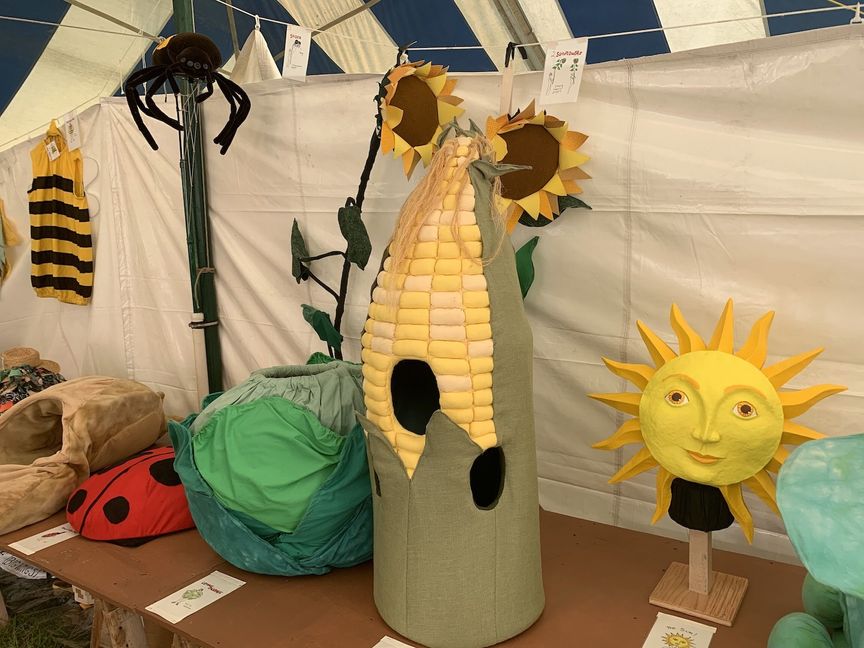
Here’s a memory from Daaby Tingle:
“My introduction to MOFGA was in 1975 when my family moved from Illinois to Camden and my mother and stepfather, Beedy and Dick Parker, joined MOFGA’s Knox County chapter. The chapter had monthly meetings in Thomaston which consisted of a potluck and, to my 12-year -old self, a mind-numbingly boring presentation by a local farmer or gardener. I was envious of my toddler sister who could fall asleep under a table during the presentations. Back at our new home, my mother dug up the backyard and planted her first vegetable garden. My disappointment at the loss of outdoor play space was nothing compared to the horror of hauling seaweed and chicken manure to the garden in buckets. Happily, my feelings about organic agriculture improved dramatically in subsequent summers when I helped with haying at Tony and Mary Bok’s farm. I loved standing in the hay cart stamping down the hay as it was pitched in, the pile rising higher and higher under my feet, and I was fascinated by the antique hay fork and trolley system that transported the hay into the barn loft. Each haying season ended with a celebration at Tony and Mary’s house: a glorious potluck with music and singing, “The Barley Mow” and “On Ilkley Moor Bar T’at”.
I went to the Common Ground Country Fair for the first time in 1978 at the Litchfield fairgrounds. There were garlic braids, lots of vegetables, lots of good music and, if memory serves, a cotton candy vendor.
In 1982 when Dick was treasurer of MOFGA, I helped count money at the Fair. The operation was set up in a tiny, inconspicuous building on the Windsor fairgrounds. Vendors arrived throughout the day to make change and at the close of the fair each day to pay a percentage of their take. To identify the building without advertising its significance to the general public, Dick had nailed a wool sock to the door, a reference to the Lake Wobegon bank that sponsored the Prairie Home Companion radio show, “Bob’s Bank. Save at the Sign of the Sock.”
In the winter of 1987 I was an apprentice at Bill and Cindy Thayer’s Darthia Farm in Gouldsboro. Cindy taught me fleece processing, carding, spinning, dying and weaving and how to make cheese and butter. Every Wednesday we drove to a gathering with the other Wednesday Spinners to spin, knit, talk and eat an amazing potluck lunch. Bill taught me to milk the cows and I helped with feeding, mucking and lambing. At the time Bill was managing the MOFGA Apprenticeship Program. Three years after my apprenticeship, my husband and I bought our own land in Gouldsboro. Cindy and Bill were endlessly supportive. They shared their expertise and lent us books and tools as we built our house, put in a large garden and tried our hand raising chickens, turkeys and pigs.
For the last 16 years I’ve coordinated the Garden Parade at the Fair. Partly inspired by Bread and Puppet Theater, my mother had started the parade in 1990 as a way to engage children and other fairgoers with MOFGA’s mission and to carry that message around the fairgrounds. By the time I graduated from parade volunteer to parade coordinator, the number of costumes in our collection had grown from about 20 to about 75 (we have around 90 now), and we had long since given up on the idea of marching the parade over the whole fairgrounds. Young children dressed as ladybugs and carrots just can’t walk that far. Coordinating the Garden Parade is my dream job, a combination of creation, conservation and organization. Most of the work is done over the winter when I mend, refurbish and rebuild well-loved costumes, signs and banners. In the spring and summer I communicate with the MOFGA Fair staff and organize our dedicated band of parade volunteers. The week of the Fair, my family and I arrive on Wednesday to start the set up. By Thursday morning, most of the parade volunteers have arrived and we spend the day hunkered down in the parade tent finishing small mending projects. I love the camaraderie of the day. We emerge from the parade tent late in the day to find that the other large tents are filled with activity and an understory of smaller tents and booths has sprouted around them. Every year I am struck by how much effort goes into producing the Fair and how every seeming problem is solved by the Fair community. In 2007 there was a statewide hay shortage and no bales were available to support the painted plywood on which we displayed the parade costumes. Late Thursday afternoon of that year, as if by magic, 30 newly-made low sawhorses were delivered and installed under the plywood.
